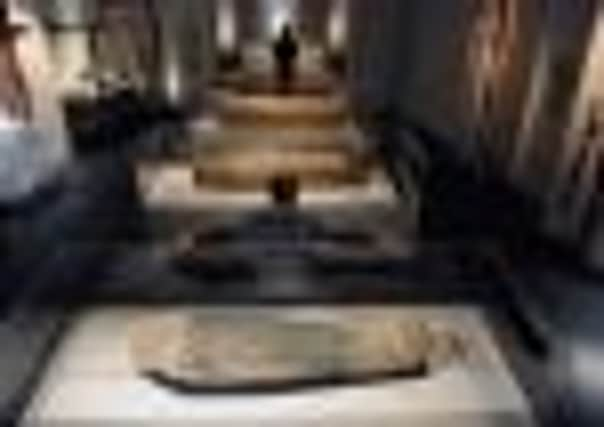Gordon Rintoul: The case for an even brighter future


For the last four decades of the 19th century, Scotland’s national museum, set in a glorious Victorian building inspired by the Crystal Palace, was known as the Edinburgh Museum of Science and Art. It was considered a place of enlightenment and education: science was seen as the foundation of industrial and economic achievement; while art was the expression of moral worth and civilisation.
Fast forward to 2012, and the National Museum of Scotland is the most popular visitor attraction outside London, following a successful £47.4 million transformation last year. The Museum has 16 new galleries, a new special exhibitions gallery, three-storey learning centre and a spectacular new street-level entrance hall. We were thrilled to welcome more than 20,000 people on our first day of reopening, and to have hosted well over two million visits since.
Advertisement
Hide AdAdvertisement
Hide AdHowever, we have not forgotten the original spirit of the museum. While our 16 new galleries cover world cultures, natural sciences, and the influence of Scots across the world, we also hold internationally significant science and technology and European art and design collections. It is important that these also receive the visibility and setting that they deserve.
I am therefore delighted that this week the Heritage Lottery Fund has indicated it will provide a grant of £4.85m towards our next phase of redevelopment. This grant will contribute enormously towards the £11.85m cost of the project and provide us with extra impetus to raise the remaining funds from private sponsors and donors.
The project will result in eight new galleries which will champion excellence and innovation, offering an inspirational resource for the scientists, engineers, artists and designers of tomorrow. The galleries will be packed with inspiring objects such as a magnificent tea service created for the Emperor Napoleon and the world’s first pneumatic bicycle tyre, given to us by John Boyd Dunlop himself in 1910. I cannot imagine Bradley Wiggins cycling 3500km across France on tyres of an earlier era, which were made of solid rubber!
We are also acquiring new objects for these galleries, such as the visually opulent Hamilton-Rothschild Tazza, recently given to us in lieu of inheritance tax, and a 17th-century Italian table, an ornate reminder of the exuberance and extravagance of the Baroque era and of the magnificent collections acquired by some Scots. These items will feature in the four art and design galleries, which will also include items from fashion designer Jean Muir, whose priceless fashion archive was donated to us in 2005, and work by Scottish-based textile designer Bernat Klein, as well as other key examples of applied art.
Four of the new galleries will feature the museum’s internationally important collections of science and technology, which include many Scottish inventions and discoveries. There will be the return of some old favourites such as working push-button models of engines and mechanical devices, many of which were made in the museum’s own workshops in the 19th or early 20th century.
One of the galleries will explore scientific inquiry from the earliest days of telescopes and microscopes right up to current research into the existence of the Higgs Boson. Another gallery will examine engineering design, focusing on objects such as bicycles, bridges and prosthetic limbs. The final gallery will look at the production and distribution of energy, including Scottish renewable energy inventions such as Professor Stephen Salter’s “duck” for harnessing wave power.
Last year we reinvented the spectacular Victorian building, recapturing and interpreting the wonders of its original architecture but making it fit for the 21st century. I’m delighted that people are visiting not just once, but again and again to enjoy the new galleries and all that the nuseum now has to offer. The National Museum of Scotland is already one of the great national museums of the world and I’m delighted that so many people have enjoyed what we have already created.
• Gordon Rintoul is the director of National Museums Scotland